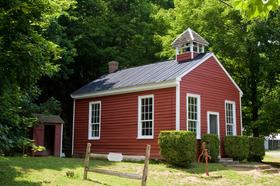Sarpy County Coop Head Start-bellevue serves 82 students in grades Prekindergarten.
The student:teacher ratio of 27:1 was higher than the Nebraska state level of 12:1.
Minority enrollment was 51% of the student body (majority Hispanic), which was higher than the Nebraska state average of 38% (majority Hispanic).
School Overview
Grades Offered
Grades Prekindergarten
Total Students
82 students
Gender %
Total Classroom Teachers
3 teachers
School Rankings
Student : Teacher Ratio
27:1
12:1
American Indian
1%
1%
Asian
n/a
3%
Hispanic
32%
22%
Black
11%
7%
White
49%
62%
Hawaiian
n/a
n/a
Two or more races
7%
5%
All Ethnic Groups
Eligible for Free Lunch
23%
38%
Eligible for Reduced Lunch
2%
8%
School Statewide Testing
School District Name
Source: National Center for Education Statistics (NCES), NE Dept. of Education
Frequently Asked Questions
How many students attend Sarpy County Coop Head Start-bellevue?
82 students attend Sarpy County Coop Head Start-bellevue.
What is the racial composition of the student body?
49% of Sarpy County Coop Head Start-bellevue students are White, 32% of students are Hispanic, 11% of students are Black, 7% of students are Two or more races, and 1% of students are American Indian.
What is the student:teacher ratio of Sarpy County Coop Head Start-bellevue?
Sarpy County Coop Head Start-bellevue has a student ration of 27:1, which is higher than the Nebraska state average of 12:1.
What grades does Sarpy County Coop Head Start-bellevue offer ?
Sarpy County Coop Head Start-bellevue offers enrollment in grades Prekindergarten
What school district is Sarpy County Coop Head Start-bellevue part of?
Sarpy County Coop Head Start-bellevue is part of Bellevue ÎÛÎÛÂþ» Schools School District.
Recent Articles

Segregation in K-12 Education: Colonial Era
Explore the origins of educational segregation during the colonial era and the differential treatment of Native American, African American, and white students. This article delves into the historical context, policies, and societal attitudes that shaped early education in colonial America, highlighting the disparities and injustices that persisted within the schooling systems of that time.

2011 Classroom Size Update: Are Classes Still Growing Larger?
Since the recession, public school classrooms have seen major budget cuts - and many increases in class sizes. How is the situation in 2011? Read this article to find out.

Will Single Sex Classrooms Save ÎÛÎÛÂþ» Schools?
Learn about the benefits of single sex classrooms and why public schools are hoping this type of classroom will save the American school system.





